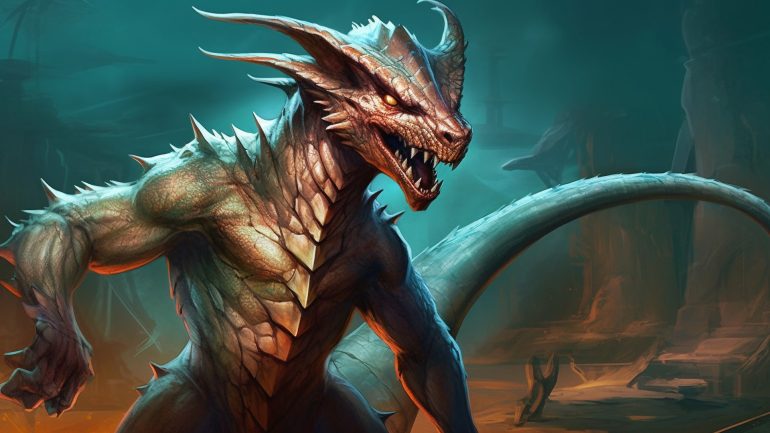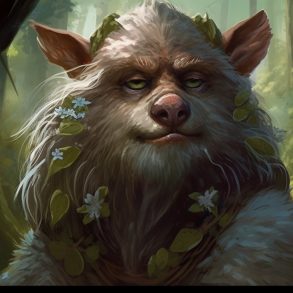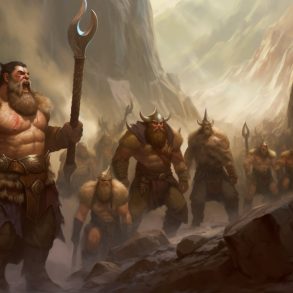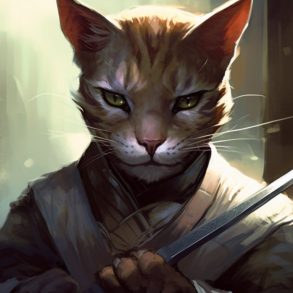Famous for living in groups in tunnel systems and mines of their own creation, these miniature, mining dragon folk are known for their wiry frames and inventiveness. The Kobold race was first published in Volo’s Guite to Monsters (VGtM), and an updated version was more recently published in Mordenkainen Presents: Monsters of the Multiverse (MPMM). This is a separate version and does not overwrite the original, it just presents a different way of playing a kobold using more current design conventions.
A proud people
Kobolds are best known to many players as an adversary to fight at early levels, who favor the use of cramped tunnels, clever traps, and dirty tricks. Whilst many kobolds live their lives in servitude to evil dragons, or otherwise live their lives in a harmful way to others, many more kobolds decide to live their life in a good-aligned fashion. Some kobolds serve mighty dragons, either through fear or reverence as deified beings, whilst others seek to protect other races from the destructive force of their draconic relatives.
While their origin may be a mystery, many kobolds express pride in their draconic features and claim an ancestral link to the powerful dragons they resemble. Those that manifest draconic powers are often elevated in kobold societies, but all kobolds hold draconic power within themselves.
Make tucker proud: Playing a Kobold
Playing a kobold gives you the following traits:
Ability Scores – Dex +2
Size – Small
Creature Type – Humanoid
Speed – 30 ft.
Age – Kobolds reach adulthood at age 6 and can live up to 120 years but rarely do so.
Darkvision – You can see in dim light within 60 feet of you as if it were bright light, and in darkness as if it were dim light. You can’t discern color in darkness, only shades of gray.
Grovel, Cower, and Beg – As an action on your turn, you can cower pathetically to distract nearby foes. Until the end of your next turn, your allies gain advantage on attack rolls against enemies within 10 feet of you that you can see. Once you use this trait, you can’t use it again until you finish a short or long rest.
Pack Tactics – You have advantage on an attack roll against a creature if at least one of your allies is within 5 feet of the creature and the ally isn’t incapacitated.
Sunlight Sensitivity – You have disadvantage on attack rolls and on Wisdom (Perception) checks that rely on sight when you, the target of your attack, or whatever you are trying to perceive is in direct sunlight.
Languages – You can speak, read, and write Common and Draconic.
Not-so-pseudo dragons: Playing an MPMM Kobold
Playing a kobold from MPMM gives you the following traits:
Ability Scores – You can increase one ability score by 2 and a different score by 1, alternatively you can increase three different ability scores by 1.
Size – Small
Creature Type – Humanoid
Speed – 30 ft.
Age – The typical life span of a player character in the D&D multiverse is about a century, assuming the character doesn’t meet a violent end on an adventure.
Darkvision – You can see in dim light within 60 feet of you as if it were bright light, and in darkness as if it were dim light. You can’t discern color in darkness, only shades of gray.
Draconic Cry – As a bonus action, you let out a cry at your enemies within 10 feet of you. Until the start of your next turn, you and your allies have advantage on attack rolls against any of those enemies who could hear you. You can use this trait a number of times equal to your proficiency bonus, and you regain all expended uses when you finish a long rest.
Kobold Legacy – Kobold’s connections to dragons can manifest in unpredictable ways in an individual kobold. Choose one of the following legacy options for your kobold:
- Craftiness – You have proficiency in one of the following skills of your choice: Arcana, Investigation, Medicine, Sleight of Hand, or Survival.
- Defiance – You have advantage on saving throws to avoid or end the frightened condition on yourself.
- Draconic Sorcery – You know one cantrip of your choice from the sorcerer spell list. Intelligence, Wisdom, or Charisma is your spellcasting ability for that cantrip (choose when you select this race).
Languages – You can speak, read, and write Common and one other language that you and your DM agree is appropriate for your character.
We hope that you’ve enjoyed darting through narrow tunnels with the kobold as much as we have. Have you played a kobold yet? Are you planning to? If you want to learn more about other race options, check out our races section, or if you want to understand the world’s greatest roleplaying game better, then check out our how to play section. Good luck out there adventurers and until next time, remember, the bigger they are, the harder they hit the bottom of the pit!






